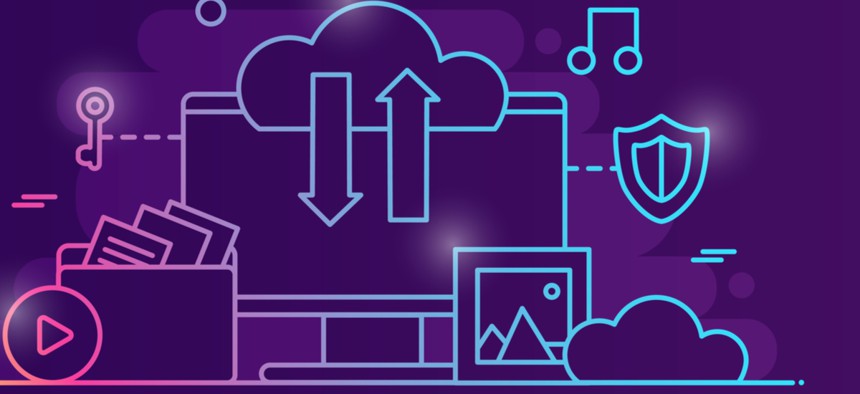Solving the COVID Cloud Challenge

KenoKickit/Shutterstock.com
Here are five ways to secure a defense in depth strategy with a remote workforce.
Government agencies have long considered teleworking options for their workforces, but security concerns frequently impeded progress. Now that millions of federal workers are working remotely, government managers need to ensure their remote workforce can securely advance the mission. To protect sensitive workloads and data, every cloud solution that enables remote delivery should leverage the principles of defense in depth.
Based on our experience supporting agencies in some of the more secure environments in government today, the following are the top five most important ways IT and program managers can ensure that all roads to, from and within their castle are protected even while supporting remote teams.
Minimize Data Exfiltration
One of the biggest concerns for any government organization or industry integrator is the unauthorized removal of data. Filtering based on location is not always feasible with a remote workforce, significantly increasing these challenges. This is why cloud-based solutions should not only have robust auditing capabilities to detect when exfiltration is attempted, they should also use secured network protocols—like those used in virtual desktop infrastructures—to prevent data exfiltration in the first place.
Facilitate Activity Visibility and Correlation
Due to the on-demand and fluid nature of cloud-based resources, federal agency environments need to facilitate visibility of user operations and system behaviors. Event logging pipelines that perform extraction, transformation and loading can tap into all corners of the environment and track all activities within a system to give the security team full visibility. Gathering data from multiple sources throughout the environment also enables correlation of activities to better identify threats and incidents. When the security team can easily view networking, application and host-level logs all together, they gain a much clearer picture about events that are transpiring and can quickly investigate.
Automate Policy Enforcement
The more you can automate processes, the better! Removing manual processes reduces the potential for human error. Using automation to enforce security policies and controls throughout an environment guarantees security mechanisms are properly and evenly applied. Automation also reduces costs and releases the security team to investigate more complex matters. Time currently spent manually hardening cloud resources upon creation is freed up by using flexible and scalable tools to implement security controls throughout an environment. Leveraging cloud-based services will expedite automation capabilities.
Balance Security and Usability
When security implementations cause the end-user experience to suffer, the user population will typically find ways to circumvent them, sometimes even operating on their own, outside the confines, control, and visibility of an enterprise solution. This is especially true for remote users who have non-corporate resources at their fingertips when they work at home. It’s essential to find the right balance of full security and compliance while also guaranteeing that end-users can access the high-performance computing resources needed to accomplish their mission. It is through this balance that agencies can ensure all end-users are incentivized to use approved, secure solutions that don’t impede the mission.
Secure Cloud Foundation
While cloud service providers have gone above and beyond to ensure that security is possible when operating remotely, in our experience most organizations still depend on the end-user to implement, configure and enforce security compliance throughout their cloud resources. Agencies would significantly reduce risks by ensuring their own cloud-based environment has all needed security controls hard-wired into the foundation of all cloud resources, taking the onus off the end-users to architect and sustain a secure environment.
Looking Forward
We share everyone’s hope that the COVID crisis will end as soon as possible. As it carries on, however, the reality of remote work for government remains. Even beyond COVID, many are anticipating the remote workforce may remain strong, as part of an ongoing trend to reduce costs, alleviate traffic, and attract younger workers to government missions. This is why it is so important for government technology leaders to continually re-evaluate and refresh the layers of their cloud security program to maintain a consistent and secured defense in depth strategy for remote work over the long term. By prioritizing these points as a checklist to achieve the level of defense in depth each agency needs, government IT managers should effectively be able to support thousands of newly remote workers across government in sustaining their productivity and keeping their organization’s mission on track.
Adam Gruber is the chief technology officer at Applied Insight.


